Dispatcher Introduction
Dispatcher Target Setup tab, target type - WIMS Cache:
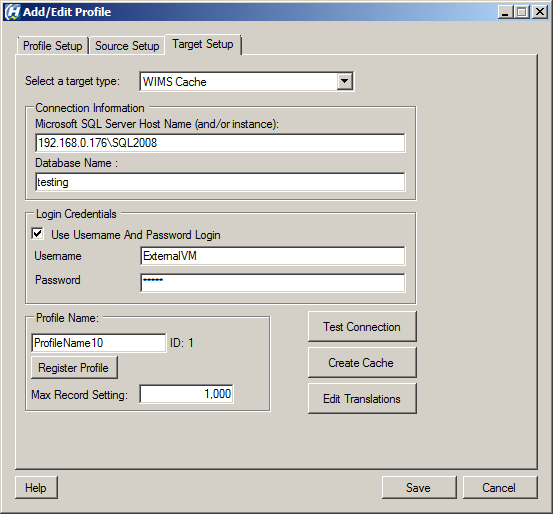
- Microsoft SQL Server Host Name (or Instance) - this field is the name of the server that WIMS Cache SQL Server database is on. It could be this form: <server name> OR <server name>\<sql server instance>
- Database Name - this field is the name of the database for the Hach WIMS Cache.
- User ID and Password - this is the user ID and password to gain access to the Hach WIMS Cache database.
- Profile Name - the unique name given to this profile by the user. Each profile should have a unique Profile Name. If the Profile Name is used by another profile, the two data sources will merge into one.
- ID - this is the unique ID associated with the Profile Name defined above (not editable).
- Test Connection - this button attempts to connection to the database using the data provided.
- Create Cache - this button creates the Hach WIMS Cache tables in the database outlined above. NOTE: the Hach WIMS Cache tables must exist before Registering Profile. It does not update the tables. If a structure change is needed you need to delete all tables and it will create new ones.
- Edit Translations - This button brings up a new screen that allows you to enter a series of server names (from the XML file) and a new server name to convert them to before processing. This was added to accommodate a situation where one source is acting as a backup to another one. The XML files contain the same data (readings from the same sensors), but they have to use different server names. This feature will allow you to translate the one of the sources server names to the other. See image below.
- Register Profile - click this button to register the Profile Name with this profile. If the Profile Name is not found it is added and the ID for that record is returned and shown.
- If the Profile Name does not yet exist, an ID for that record is created and returned and a message appears:
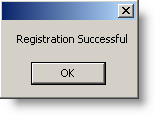
- If the Profile Name is found, the ID value is returned and a message appears:
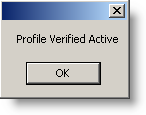
- When merging source data, use the same Profile Name. When you do this you will see the following message:
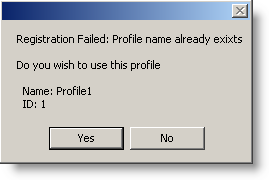
Select Yes so that the two (or more) profiles merge the source data into one cache profile.
- Max Record Setting - If the record count for the Reading table exceeds this value then the Dispatcher will not enter any more data into the cache. This value is saved in the Cache and is also used by the Q13627 Interface. This value is also the same for all Dispatchers that use this Cache.
The following is an image of the XML Translation screen shown when the user clicks on the Edit Translations button.
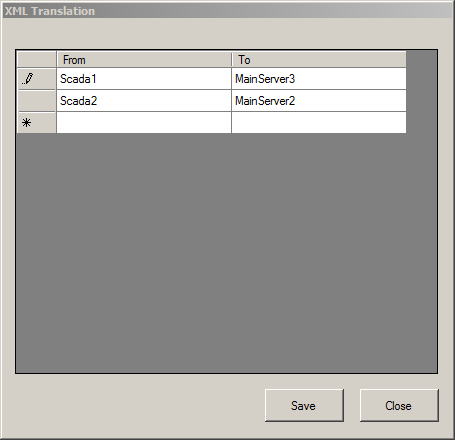
The Edit Translation screen allows the user to enter mappings from the XML Server name to the Cache Server name. In other words, when the Dispatcher is running a profile with server mappings it will change the server name from the XML file to the new value before saving it in the Cache. So the interface needs to use the new server name instead of the one from the XML file. This allows the merging of two sources (servers) of data into one variable's data in WIMS. Of course, XML server names that do not have a match in above screen are moved to the cache's Server table unaltered.